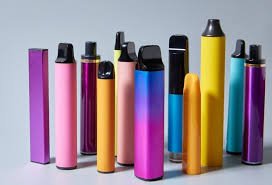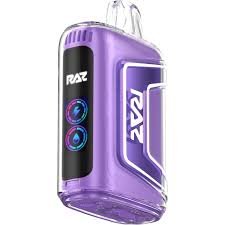How Are Flavor Restrictions Influencing Teen Vaping Rates?

Over the past decade, vaping has become increasingly popular among teenagers. This trend has raised concerns among public health experts and government officials due to the potential long-term health risks associated with nicotine use and the appeal of flavored e-cigarettes. In response to growing concerns about youth vaping, many governments around the world have introduced flavor restrictions on vaping products in an attempt to curb teenage vaping rates. This blog explores how these flavor restrictions are influencing teen vaping rates, focusing on the effectiveness of such policies and their broader implications.
The Rise of Teen Vaping
Vaping among teenagers has been a concerning trend, especially in the United States and other countries where e-cigarette use has skyrocketed in recent years. According to several studies, a significant percentage of teenagers report using e-cigarettes, with flavored products being a key factor in their decision to start vaping. The sweet, fruity, and candy-like flavors of vaping products are particularly attractive to younger individuals, making them more likely to experiment with these devices.
In response to the growing vaping epidemic among teens, various governments have implemented policies aimed at limiting the appeal of vaping products to younger consumers. One of the most common strategies has been to impose flavor restrictions on e-cigarettes and vape products, with the hope that reducing the availability of sweet flavors will decrease the overall appeal of vaping to teens.
The Role of Flavors in Teen Vaping
The role of flavors in teen vaping cannot be overstated. Many teenagers who use e-cigarettes report that the availability of flavors such as fruit, candy, and dessert is one of the main reasons they started vaping. These flavors mask the harshness of nicotine, making it easier for young users to tolerate the sensation of inhaling. The availability of appealing flavors has contributed to the rapid increase in teen vaping, with many youth considering e-cigarettes as a more enjoyable and less harmful alternative to smoking traditional cigarettes.
Research has shown that flavored e-cigarettes are significantly more attractive to teens than traditional tobacco-flavored products. This trend has led to concerns about the long-term health risks of nicotine addiction and the potential gateway effect of vaping. Public health experts argue that by reducing or eliminating these appealing flavors, governments can decrease the likelihood of teenagers starting to vape in the first place.
How Flavor Restrictions Are Being Implemented
In response to these concerns, several countries have introduced flavor restrictions on vaping products, aiming to limit the availability of flavors that are particularly attractive to young people. In the United States, the Food and Drug Administration (FDA) has implemented policies that restrict the sale of flavored e-cigarettes, particularly those that are marketed to youth, such as fruit and candy flavors. The FDA’s restrictions also cover flavored vape pods and disposable e-cigarettes, although tobacco and menthol flavors are typically exempted from these regulations.
Similarly, other countries such as Canada, the UK, and Australia have implemented or are considering flavor restrictions as a part of their efforts to reduce teen vaping rates. These restrictions have varying levels of enforcement and scope, with some countries banning all flavored e-cigarettes, while others only restrict certain types of flavors.
In the UK, for example, while flavors like mint and menthol remain available, fruity and dessert-inspired flavors are being targeted due to their popularity among young users. The goal of these flavor restrictions is to make vaping less appealing to teenagers by removing flavors that are perceived as sweet or fun. These measures aim to curb the rising number of young individuals experimenting with e-cigarettes and the long-term public health implications of widespread nicotine addiction.
Impact of Flavor Restrictions on Teen Vaping Rates
The primary goal of flavor restrictions is to reduce the number of teenagers who start vaping by limiting access to flavored products. Early evidence suggests that these policies have had a positive impact on teen vaping rates, although the results are mixed and often vary by region.
In the United States, surveys conducted by the National Youth Tobacco Survey (NYTS) have shown a decline in the use of flavored e-cigarettes among teenagers in areas where flavor restrictions have been implemented. For example, a significant drop in the use of flavored e-cigarettes was reported following the FDA’s ban on flavored cartridges for e-cigarettes, with many teens reporting that they were no longer able to access their favorite fruity flavors. However, while the overall prevalence of teen vaping may have declined in some areas, many teens are still able to access flavored products through other channels, such as online retailers or the black market. This has led some public health experts to question the overall effectiveness of flavor bans if they are not coupled with strict enforcement.
In other countries, flavor restrictions have similarly been linked to a decrease in the number of teens who use e-cigarettes. For example, in the UK, the number of underage users of disposable vapes has decreased as a result of flavor bans and stricter age verification measures. This suggests that removing appealing flavors can help reduce teen vaping rates, but it is important to note that other factors, such as enforcement and education, also play a significant role in the success of these policies.
The Potential Impact on Raz Vape and Other Brands
Flavor restrictions have not only affected teen vaping rates but also the market for vaping products in general. Brands that have built their reputation on a wide variety of appealing flavors, such as Raz Vape, may face significant challenges under new flavor regulations. Companies that offer a diverse range of fruity or dessert-inspired flavors could see a decline in sales if these flavors are banned or restricted.
However, some vape brands have already begun to adapt to the changing regulatory landscape by offering new products that comply with flavor restrictions. For example, some manufacturers are focusing on producing tobacco or menthol-flavored e-cigarettes, which are less likely to be subject to flavor bans. Others are exploring new, less-sweet flavors that may still appeal to adult smokers while avoiding the flavors that attract younger users.
While flavor restrictions may impact the revenue of vape brands, it could also encourage innovation in the industry. Manufacturers may develop new products and flavor profiles that appeal to adult users while adhering to the regulatory guidelines. This could lead to a shift in the focus of the market, where flavored e-cigarettes are more targeted toward smokers looking to quit rather than young, non-smokers seeking an enjoyable, low-risk experience.
The Counterargument: Will Teens Just Switch to Other Alternatives?
While flavor restrictions may help reduce the appeal of vaping for teens, it is important to consider whether these measures will simply lead teens to seek out other alternatives. Some critics of flavor bans argue that teenagers may simply switch to smoking traditional cigarettes or using illegal, unregulated products if flavored e-cigarettes are no longer available. This could lead to a new set of public health problems, such as the resurgence of cigarette smoking among young people.
Additionally, the rise of black-market products has been a growing concern. Teenagers may continue to access flavored e-cigarettes through illegal channels, which are often harder to regulate and monitor. This would undermine the effectiveness of flavor bans and make it more difficult for authorities to track and manage vaping-related health risks.
Conclusion
Flavor restrictions have the potential to play a significant role in reducing teen vaping rates by limiting the appeal of e-cigarettes to younger consumers. Early evidence suggests that these measures can have a positive impact on teen vaping rates, although their effectiveness depends on enforcement and the availability of alternative products. While the restriction of flavored e-cigarettes may impact brands such as Raz Vape, it also presents opportunities for innovation and market adaptation. As governments continue to implement and refine flavor restrictions, it will be crucial to monitor their impact on both vaping rates and public health outcomes to ensure that these policies are achieving their intended goals. Ultimately, flavor restrictions, combined with education and enforcement, could contribute to a significant reduction in teen vaping, benefiting public health in the long term.




